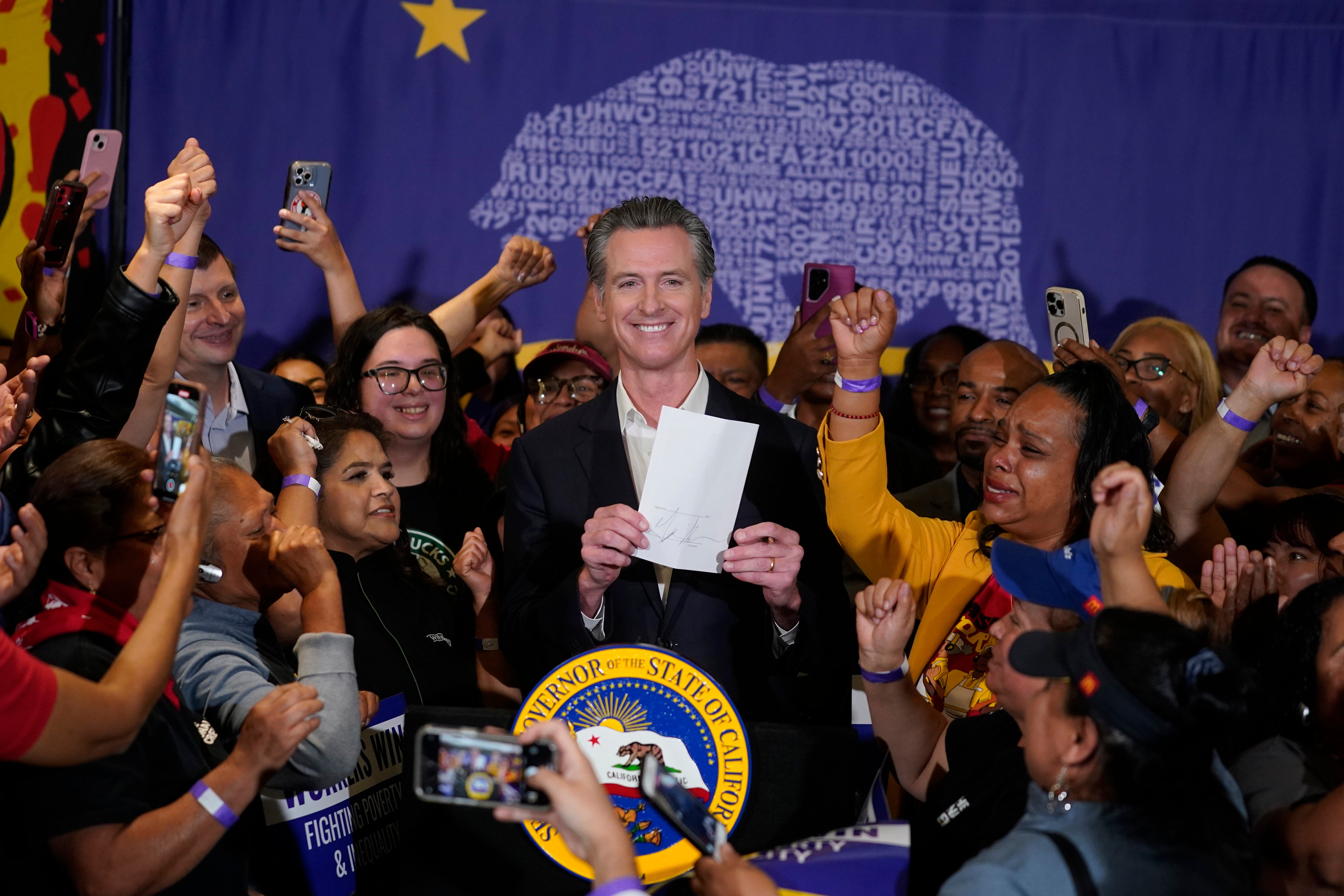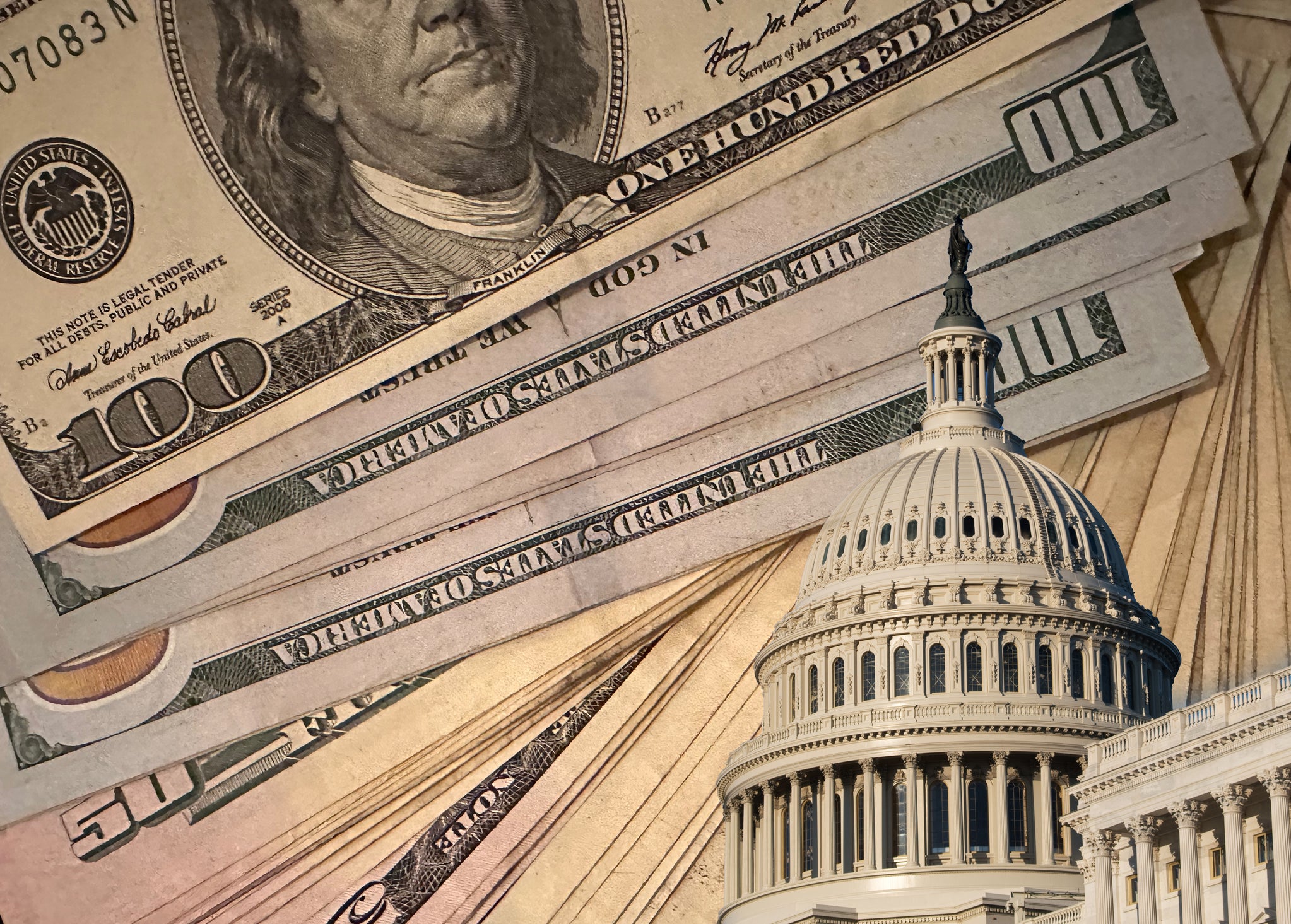What is the minimum wage in different states across the US?
Here is everything you need to know about state minimum wage laws in some states across the US

Your support helps us to tell the story
From reproductive rights to climate change to Big Tech, The Independent is on the ground when the story is developing. Whether it's investigating the financials of Elon Musk's pro-Trump PAC or producing our latest documentary, 'The A Word', which shines a light on the American women fighting for reproductive rights, we know how important it is to parse out the facts from the messaging.
At such a critical moment in US history, we need reporters on the ground. Your donation allows us to keep sending journalists to speak to both sides of the story.
The Independent is trusted by Americans across the entire political spectrum. And unlike many other quality news outlets, we choose not to lock Americans out of our reporting and analysis with paywalls. We believe quality journalism should be available to everyone, paid for by those who can afford it.
Your support makes all the difference.A new law in California will raise the minimum wage for fast food workers to $20 per hour next year.
In the US, there are over 5 million people employed in the fast-food restaurant industry as of 2023, according to IBIS World.
The new law will take effect on 1 April 2024 and it will be the highest guaranteed base salary in the industry. The state’s minimum wage for all other workers which is $15.50 per hour — already among the highest in the United States.
Democratic Governor Gavin Newsom signed the law on Thursday, amid a whirlwind of cheering workers and labour leaders at an event in Los Angeles.
Mr Newsom dismissed the popular view that fast-food jobs are meant for teenagers to have their first experience in the workforce.
“That’s a romanticised version of a world that doesn’t exist,” Mr Newsom said.
“We have the opportunity to reward that contribution, reward that sacrifice and stabilise an industry.”
So how much do other states get paid as a minimum wage in the workforce on average?
Here is everything you need to know about state minimum wage laws in some states in the US

Alabama
The US Department of Labor says there is “no state minimum wage law.”
However, employers subject to the “Fair Labor Standard Act” must pay the current federal minimum wage of $7.25 per hour.
Alaska
Basic Minimum Rate per hour: $10.85
Premium Pay After Designated Hours: Daily - 8, Weekly - 40
Under a voluntary flexible work hour plan approved by the Alaska Department of Labor, a 10-hour day, 40-hour workweek may be instituted with premium pay after 10 hours a day.
“The premium overtime pay requirement on either a daily or weekly basis is not applicable to employers of fewer than 4 employees. The minimum wage is adjusted annually based on a set formula,” the department says.
Any overtime premium rate is one and one-half times the employee’s regular rate – unless otherwise specified.
Arizona
Basic Minimum Rate per hour: $13.85
California
Basic Minimum Rate per hour: $15.50
If employees work overtime, they are subject to the premium pay after designated hours, this means that any “work in excess of eight hours in one workday, in excess of 40 hours in one workweek, or in the first eight hours worked on the seventh day of work in any one workweek shall be at the rate of one and one-half times the regular rate of pay.”
And any “work in excess of 12 hours in one day or in excess of eight hours on any seventh day of a workweek shall be paid no less than twice the regular rate of pay.”
Colorado
Basic Minimum Rate per hour: $13.65
Premium pay after designated hours: Daily - 12, Weekly – 40
The Minimum wage rate and overtime rules are applicable to retail and service, commercial support service, food and beverage, and health and medical industries.
Delaware
Basic Minimum Rate per hour: $11.75
Delaware adopts the federal minimum wage rate “by reference if the federal rate is greater than the State rate.”
Florida
Basic Minimum Rate per hour: $11.00
The department states that the minimum wage is adjusted annually based on a set formula.
The Florida minimum wage is scheduled to increase to $12.00 on 30 September of this year.
Georgia
Basic Minimum Rate per hour: $5.15
“The State law excludes from coverage any employment that is subject to the federal Fair Labor Standards Act when the federal rate is greater than the State rate”, the department says on its website.
Hawaii
Basic Minimum Rate per hour: $12.00
Premium Pay After Designated Hours: Weekly - 40
If employees are earning a guaranteed monthly compensation of $2,000 or more they will be exempt from the State minimum wage and overtime law.
The department notes: “Domestic service workers are subject to Hawaii’s minimum wage and overtime requirements. Act 248, Regular Session 2013.”
Idaho
Basic Minimum Rate per hour: $7.25
Nebraska
Applicable to employers of four or more employees
Basic Minimum Rate per hour: $10.50
New Mexico
Basic Minimum Rate per hour: $12.00
Premium Pay After Designated Hours: Weekly – 40
Ohio
Employers with annual gross receipts of $372,000 or more can pay a minimum rate per hour of: $10.10
Premium Pay After Designated Hours: Weekly - 40
Employers with annual gross receipts under $372,000 can pay a basic minimum rate per hour of: $7.25
Premium Pay After Designated Hours: Weekly - 40
For more information on State minimum wage laws across the US, visit the US Department of Labor website, here.
What have people said about the wage increase in California?
Ingrid Vilorio, a fast-food worker at a Jack In The Box in the San Francisco Bay Area, said the increase in salary next year will bring some relief to her family, who until recently was sharing a house with two other families to afford rent.
“A lot of us (in the fast-food industry) have to have two jobs to make ends meet, this will give us some breathing space,” said Ms Vilorio, who also works as a nanny.
“This agreement protects local restaurant owners from significant threats that would have made it difficult to continue to operate in California,” said Sean Kennedy, executive vice president for public affairs for the National Restaurant Association.



Join our commenting forum
Join thought-provoking conversations, follow other Independent readers and see their replies
Comments